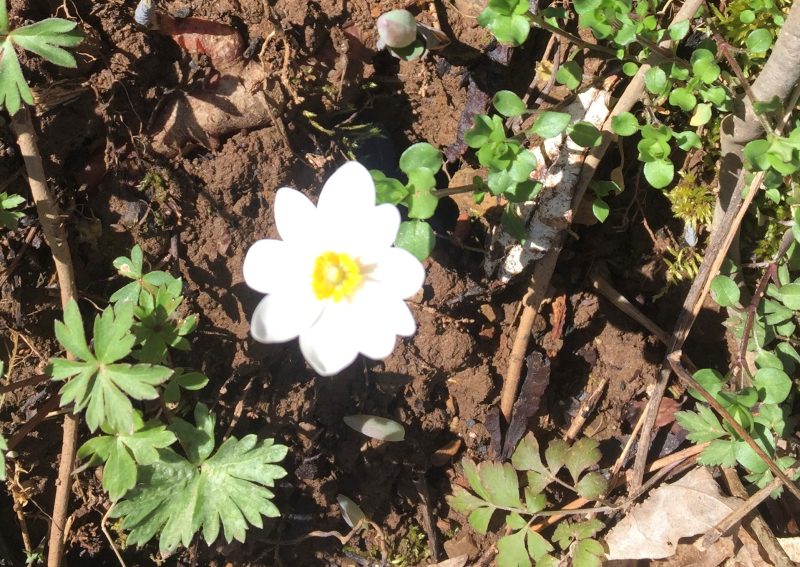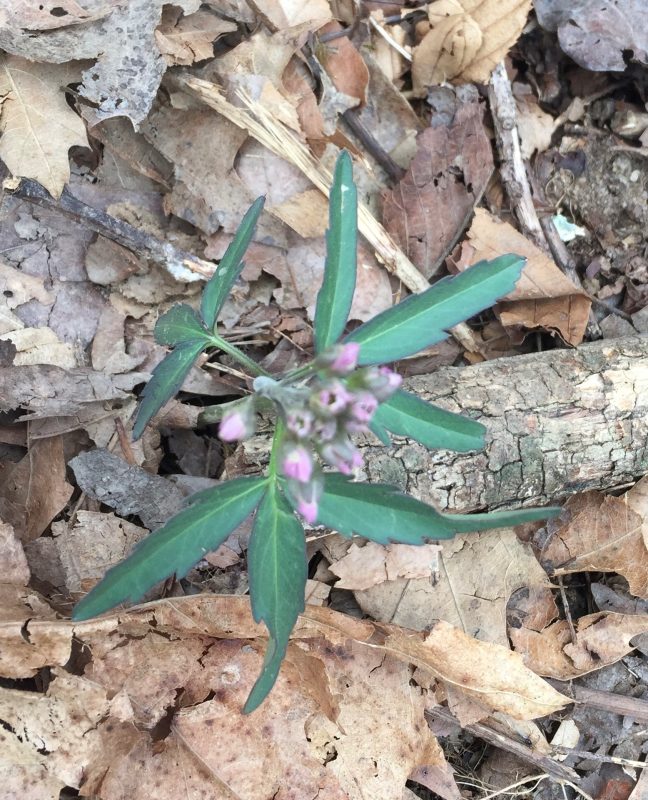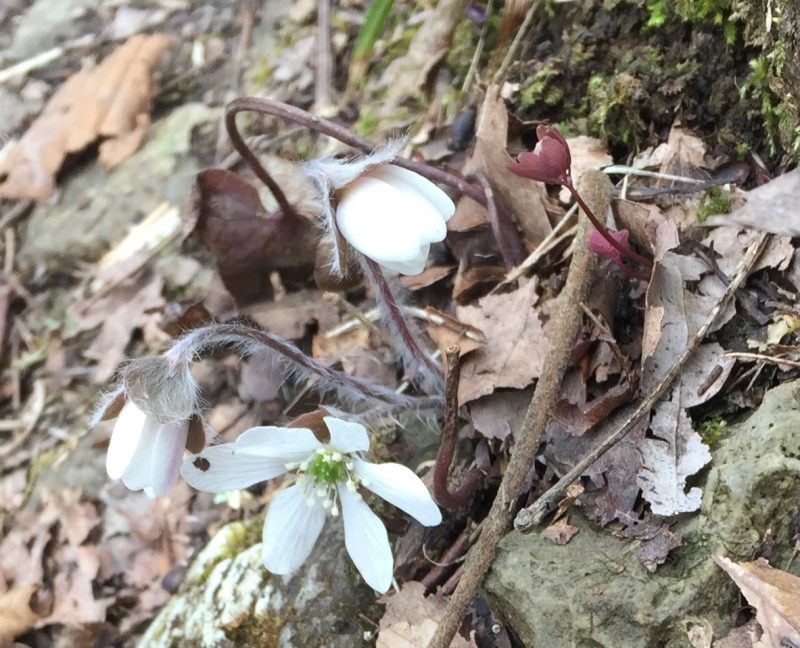
By Pat Brown
Contributing Writer
The appearance of domestic blooms in home gardens is a signal that wildflowers are busily coming out of their winter hiding in the woods in and around the New River Valley.
Local residents can gain access to see and enjoy wildflowers if they are willing to do some walking. A variety of wildflowers can easily be spotted, admired, and photographed. Picking, however, is against the rules.
One of the princesses of wildflowers, the trillium, is about to be visible in a number of locations, including Falls Ridge Nature Conservancy Reserve that lies between Shawsville and Ellett Valley in Montgomery County. Trillium can also be viewed on the wildflower trail at Wildwood Park in Radford. Each location has a website.

White Toothwort and Hepatica (also called Liverwort) were visible on Dry Run Road at the end of March and may still be showing up. Hepatica also grows at Wildwood and at Montgomery County’s Mid-County Park (Blue Blaze Trail). Dutchman’s Breeches was just beginning at Wildwood and on Dry Run Road outside of Blacksburg in the last days of March.
Delicate pastel pink Spring Beauties grow in clusters from March to May, so they have been and should continue to be easy to spot at Wildwood, Mid-County Park or along Dry Run Road.
It is time for the appearance of a yellow lily-like blossom called trout lily to adorn hillsides at Wildwood Park and Dry Run Road. This plant has another less lovely name: Dog-tooth. Coltsfoot, also yellow and resembling a leggy and less leafy version of a dandelion, can be found at those locations and others.
Wildwood Park’s website can help in a wildflower identification quest. A special wildflower trail goes up a hillside. (Dog owners usually stick to the park’s paths.) Mid-County Park is public and also has a single-file trail for nature lovers. Falls Ridge is a Nature Conservancy property that prohibits dogs. Dry Run Road is flanked by private property, but hillsides give walkers a floral display without encroaching on another person’s property.
“I always watch for Virginia bluebells at tax time, and (wild) rhododendron at Father’s Day” said Beth Thomas recently. As a hiker and member of the Virginia Native Plant Society, she has been seeking out wildflowers in the area for decades.
She recalled taking trips with Virginia Tech’s former “Free University” program because she loved “being out in nature.” For years she led a hiking group in the area, and wildflower sightings were an integral part of each trip.
Thomas recommends revisiting favorite walks at different times since “you may discover something that was not blooming” on your first outing.
To help with identification, she recommends locating a copy of “Wildflowers of the Shenandoah Valley and Blue Ridge Mountains” by Oscar W. Gupton and Fred C. Swope. In addition to being specific to this region, the book is organized by the timing and color of blossoms. It lists blooms that are visible even into October.

Wildflower lovers should always be careful to look and photograph but not to pick and trample. Looking for the same blooms next year is part of the fun, and picking the flowers threatens to reduce their ability to multiply and thrive.
Thomas clarified the concept. Wildflowers, she explained, “colonize” where conditions are perfect. They won’t just grow any and every place. That’s why people have to go find them. A friend remarked to Thomas that she had witnessed (on a recent weekend) crowds of people visiting Falls Ridge with a number of them ignoring the dog prohibition.
Thomas noted, “This year of COVID isolation has been bad for many natural areas that have been ‘discovered’ such as Falls Ridge and Pandapas Pond trails.”
Anyone answering the call of the wildflowers should grab a guidebook and head out. But remember to carefully and leave the dogs at home.


